How a Mountain on Hell (Ascension Island) was Terraformed into a Green Forest
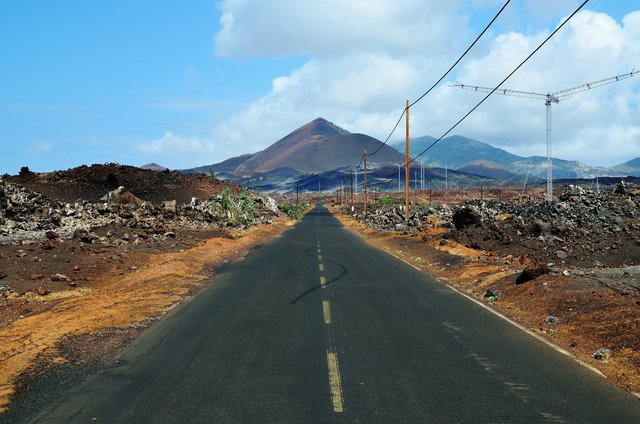
Science fiction novels and dreams of a future beyond Earth often discuss terraforming other planets. Terraforming is the process of covering a planet’s surface with plant life, which can help add oxygen to an atmosphere. Mars, for example, has a thin atmosphere dominated by carbon dioxide. It also has soil that could be capable of growing plants if some additional nutrients were added. And water…plants need water! In time, plants on Mars would add oxygen to the atmosphere there and make it possible for humans to breathe the air.
Ascension Island, which is in the middle of the Atlantic Ocean between South America and Africa, has been described by many visitors as hell. It is a clump of rough, black volcanic lava with red lava hills rising above. In some ways, as many have remarked, it looks a lot like Mars. Portuguese sailors saw it as arid and desolate, which is why they gave it a pass. They named the island for the date of its discovery (Ascension Day), dropped some goats there to feed any future sailors who were shipwrecked, and then kept on sailing.
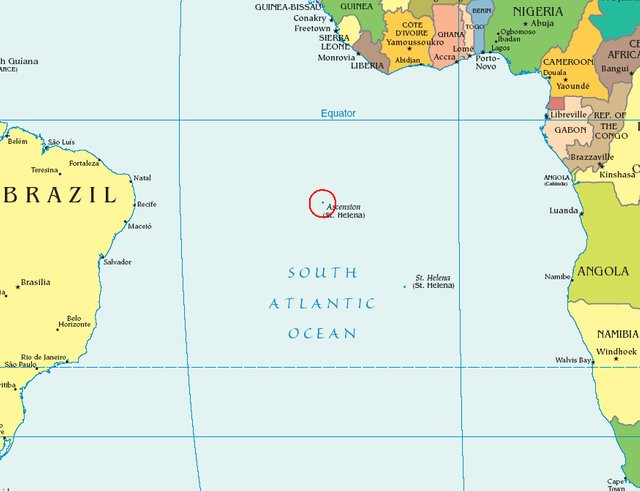
Ascension Island, showing the clouds that gather at its highest peark. Creative Commons via Wikimedia.com by LordHarris.
Transforming Ascension's Highest Peak
Once Napoleon was banished to St. Helena (a few hundred miles away), the British took an interest in Ascension and other remote Atlantic islands. There was a fear that the French would move in and try to rescue Napoleon. So the British set up a base and garrison on Ascension. Today, there isn’t much more there: British and American bases, and about 800 people living there at any one time, but no indigenous residents. Over time, these bases became important stopping and refueling points for ships and aircraft between South America and Africa.
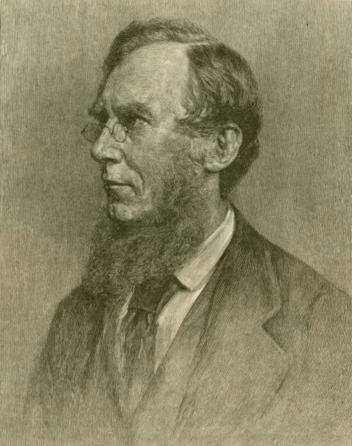
Joseph Hooker, Darwin's close friend. New York Public Library.
In 1836, Charles Darwin stopped at Ascension on his famous voyage with the HMS Beagle. The island was a dry and treeless volcanic cinder. He called it “burnt”, “hideous”, and “completely destitute of trees”. Darwin noted that the plants in the interior were just enough to sustain some sheep, goats, cows, horses, and guinea fowl (as well as rats) that had been dropped on the island by previous ships. A few years later, Darwin’s close friend Joseph Hooker also visited Ascension. He and Darwin discussed a radical idea.
There was little fresh water on the island, but Hooker saw the fog on the mountains in its interior. Encouraged by Darwin, he suggested that trees should be planted on the highest mountain. He theorized that trees would trap moisture from the air and bring it to the ground as droplets, collecting more fresh water into the streams and supplying the island. Joseph Hooker’s father served as the head of the Royal Botanical Gardens at Kew, a post which he later held himself. So he was able to get trees and plants sent for planting on Ascension, shipping 300 samples from Kew between 1947 and 1950, all planted on Ascension's tallest mountain. Other samples were obtained from South America, from South Africa, and elsewhere.
Water catchment at Ascension with Green Mountain behind it. Creative Commons via Wikimedia.com by LordHarris.
The Terraforming Had Some Negative Consequences, But it Worked
Today, some 170 years after planting began, there is a thriving forest on Ascension’s highest mountain. Appropriately, it’s called Green Mountain. Dozens of species of trees and plants grow there. Above the desolate volcanic landscape, one can see a lush, green cloud forest peeking through the mists. And the forest has developed a different character for each strata of altitude.
Where foreign plants have been introduced, the downside has been the suppression of native species. Most of the thriving plants on Green Mountain are a mish-mash of species from all corners of the world. The few endemic native species, which evolved with much less competition, have been squeezed out by the introduced plants.
Similar stories are told on nearly every small, isolated island around the world, even ones where rats have been introduced and have decimated wild bird populations by eating their eggs. On St. Helena, another island in the middle of the Atlantic, just a few hundred miles from Ascension, there is a rare plant called the bastard gumwood tree. It is endemic, growing only on this one small island and nowhere else in the world. Once, forests of bastard gumwood (love that name) covered much of the island, but they were cleared until only few of these native trees remained. For a time, these trees were thought to have gone extinct. Today, there are just two bastard gum trees on the island, one cultivated and the other growing wild on a rock, but fortunately a breeding program has succeeded in growing more saplings that can be planted out.
However, other species adapt well, such as land crabs on Ascension. They much prefer the green forests to the volcanic cinder.
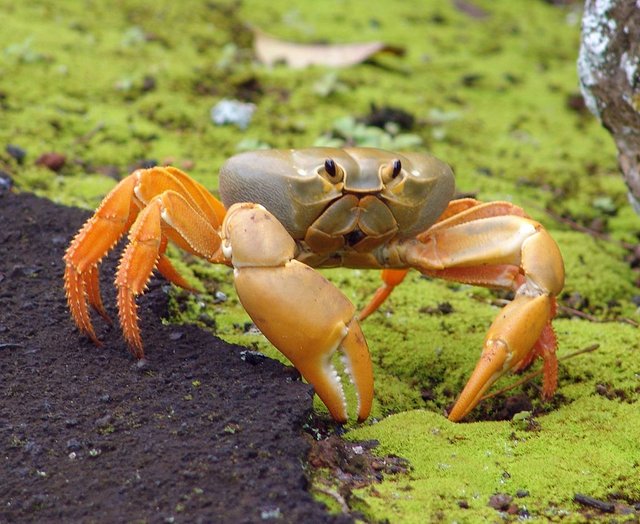
Land crab on Ascension Island. Creative Commons via Wikimedia.com by Drew Avery.
So Ascension’s terraformed forest comes with a caveat, which is that its species are largely introduced (and some would say invasive). A few people refer to it as the fake or false forest. And yet, it is a thriving ecosystem that has grown up and found a thriving balance in a relatively short period of time. Even 20 years after the first plantings, food trees like bananas and guavas were thriving on Ascension’s Green Mountain. Over time, the forest covered more of Green Mountain. The trees planted in the clouds fulfilled Joseph Hooker’s vision of trapping moisture from the air into fresh water for the island.
A view from Green Mountain, showing the stark lava landscapes surrounding the oasis of green on its highest peak. Creative Commons via Wikimedia.com by LordHarris.
And now, a century and a half later, nature has taken over. The trees and plants on Green Mountain, many of which did not grow with one another in their natural environments, have reached a harmonic balance. At the lower levels of this mountain ecosystem, pines, eucalyptus and succulents support a dryland ecosystem. High up, as the mountain becomes wetter, there is a jungle in the cloudforest, complete with bananas, gingers, and other tropical species. Near the peak, where it is cool, bamboo forests, mosses, and ferns thrive, much as they do in similar environments around the world.
Hell Can be Landscaped with Nature
Older volcanic islands develop ecosystems over time from the plant seeds that drift there or are deposited by migrating birds. In Ascension’s case, as a younger volcanic island, that process had not yet taken place in a major way. Humans kick-started it much more quickly with a wide diversity of plant species from around the world that showed promise of succeeding in such an environment.
Ascension’s Green Mountain was terraformed, just as we read about in science fiction novels. In an era during which we have lost so much of earth’s natural forests, here one has been created where none existed before. Could the same thing be done on a planet like Mars? Ascension had many elements going for it that may be more difficult to find on Mars. Ascension had water waiting to be harvested from the clouds. It had volcanic soil rich in minerals. It had ample sunshine at its latitude to drive photosynthesis. It did not have the radiation levels that exist on the surface of Mars.
And yet, if those problems can be overcome, the foresting of Ascension’s Green Mountain proves that terraforming can succeed in a relatively short window of time. Hell can be landscaped. And not just with lawns or golf courses, but with forests that build nature as they harvest the mist.
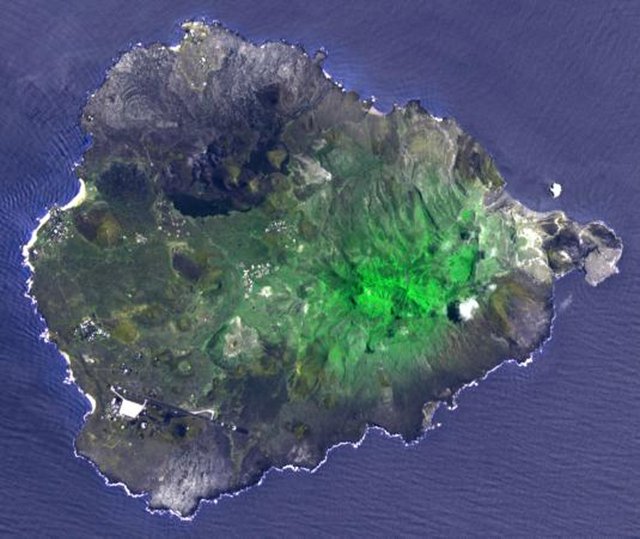
An aerial view of Ascension Island shows the terraformed Green Mountain in an otherwise arid volcanic landscape. NASA.
References
http://www.slate.com/blogs/atlas_obscura/2014/09/19/ascension_island_in_st_helena_lava_fields_false_forest_world_s_worst_golf.html
https://www.nasa.gov/feature/can-plants-grow-with-mars-soil
https://en.wikipedia.org/wiki/Green_Mountain
http://globaltrees.org/threatened-trees/trees/bastard-gumwood/
Nature’s Treasure Islands, a television series distributed by FilmWise, available on Amazon.com.
https://news.nationalgeographic.com/2017/05/ascension-island-terraformed-biology-evolution-conservation/
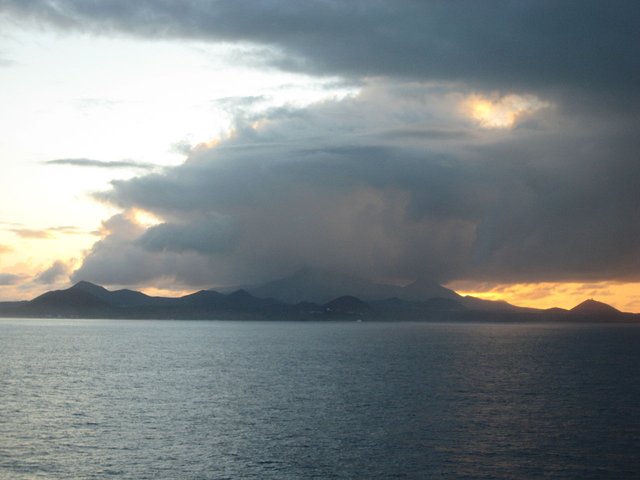
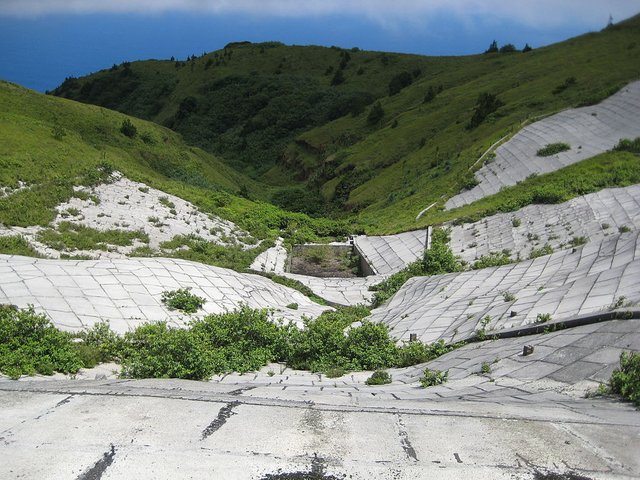
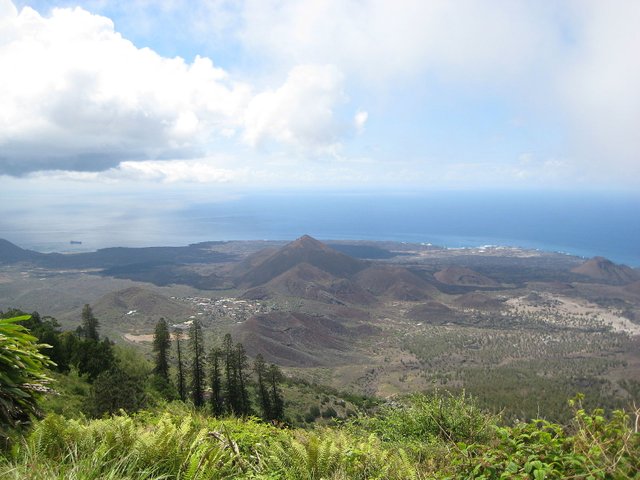
Never heard of the island before... Kind of interesting to read about it.
Now I love the simplicity you brought into the transformation...... I think I learnt quite a great deal.
Simplicity is my middle name. It's the only way I can understand things myself.
Asension Island is a typical place where post apocalyptic movies can really be shot, I mean the location what a transformation it actually witnessed you know having those green life, the trees and totally transformation into a habitation which is not bad. However what do you think @donkeypong? do you think Mars can also be transformed like Asension Island since there are visible sign of life there?
I think it will take a long time and some creative use of resources, but in the next few lifetimes, it may be achieved.
I like the concluding sub topic 'hell can be landscaped with nature
I watched the series Terra Nova a few years back and it opened my eyes to possibilities of man made attempts at terraforming, even though they focused on the past
I think Mars eventually will unundergo a Terra transformation of some sorts, just not in our lifetimes. It's amazing what science has managed to accomplish
I agree; it's unlikely to happen during our lifetimes, but if they can solve a few problems, it would be possible relatively soon.
I think the whole zeal for space exploration/colonization has died down a bit. If they consider it a priority, I don't see why it won't happen
I never heard about Asension Island but as per your post I might be one of the best island between South Atlantic ocean (South America and Africa).
And the story is interesting about changing from a dark island to a green island between 170 years..
So today I get knowledge about a new island thanks @donkeypong
Posted using Partiko Android
Thanks for the comment and glad you learned something new.
We have many planets and many planets that we already know about, but it is very difficult to live in them. Our destructive authorities have long been considered as a planet suitable for living in Mars. If we live in this planet then our world population will be somewhat reduced. The story is our relief because, on the other hand, many people are increasingly increasing day by day, which is causing the inconvenience.
Thank you so much for giving us an idea of our good world for posting so beautiful@donkeypong
We probably need to live within our means, which means harvesting resources sustainably, using renewable energy, cutting down greatly on carbon emissions, and not trashing the ocean with plastic. It will be a while still before we can live on any other planets or moons.
Aren't all trees bastards...fathers unknown!
Known only to the bees and other pollinators.
Haha yes🤣
Hmmm, I got a different lesson from this article, what of if all this people that made attempt to try something impossible, who would have believed such a mountain could grow plants....
What a beautiful mountain it turned out to become.
Indeed!
It's amazing how someone could help that something like this mountain of hell as they call or called it became a green forest
The truth I did not know this story and I thought that this was not possible but I see that this man could do it alone is a matter of studying the place a bit like everything with its faults but what was achieved was achieved
It is inspirational at some level.
You're right this means that nothing is impossible and if you dream it and want it that way it will be
Where do you find stories like this? It has that journalistic vibe.
I write like a youtube commenter haha, but this is obviously a bit different.
Its quite cool what they did, i have to say, but i honestly think Mars is going to be a bit tougher to pull off. Haha :D
Was any type of nuclear or other type of waste also dumped on the island? I ask because in the first image of this post, it appears that way.
Thank you.
Mother Liberty.
https://busy.org/@motherlibertynow
Not aware of any, as it's never been mentioned in any source I've encountered, but I'm far from being an expert.
Oh, okay...thanks... that is typically how the cabal works...dump nuclear waste on islands...then declare them a paradise...
To become great, one must start small, be willing to listen, learn, serve others first.
https://busy.org/@motherlibertynow/to-become-great-one-must-start-small-be-willing-to-listen-learn-serve-others-first
● It is often said that a great leader must be a great man or a great woman. But what makes one human mind, body, soul and spirit be recognized in time, among the millions, to stand-out among the crowd and draw millions to a cause?
● Some say it is passion. Certainly passion alone will not endure without character, moral direction, the pursuit of justice, liberty, equality, freedom and all that Mother Liberty stands for.
► Certainly endurance comes with passion. And passion follows the pursuit of a dream. A dream may come for personnal reasons or be the result of the pursuit of justice, equality and freedom. Who can judge the heart of man?
https://busy.org/@motherlibertynow
Mother Liberty.